Dresden is the capital city of the German state of Saxony, and today it is the second-largest city in Saxony and the twelfth-largest in Germany. In 1270 the city became the capital of the margraviate of Meissen, a major principality of the medieval Holy Roman Empire, ruled by the Wettin dynasty, who constructed many castles and fortresses in the region.
In 1423 the margraviate merged into the new Electorate of Saxony, whose rulers (Electors) reigned in Dresden from 1547 onwards. From 1485 the dukes of Saxony had also been based in Dresden, making the city a major seat of power.
During the early modern period, and under the rule of Elector Frederick Augustus II, Dresden became a leading European city in terms of art, technology, and culture, thanks to Frederick’s gathering of musicians, artists, and architects from across Europe.
His reign marked the construction of many fine Baroque palaces, both in Dresden and the surrounding countryside.
Disclaimer: This post contains affiliate links. This means that should you click on certain links and then subsequently purchase a product, I will receive a small commission.
You might want to check out: The best German Castles to visit.
Where to Stay in Dresden Dresden is the best place to stay if you want to see the castles close to the city. You can book a rental car, or take the train, to visit the best castles near Dresden. Bilderberg Bellevue Hotel Dresden: The Bilderberg Bellevue is located in a beautiful garden on the river banks of the Elbe river, where you can enjoy the view of the old town of Dresden. The hotel offers modern rooms, a pool, and a fitness room. You can enjoy grilled specialities and local beer at the Elbsegler-Biergarten or have cocktails at the bar. Book your stay here. Penck Hotel Dresden: Located within walking distance of the old town of Dresden and its landmarks, the Penck Hotel offers modern rooms. The restaurant specialises in fresh regional cuisine, homemade cakes and Saxon specialities. After a day of exploring the castles, you can relax at the bar while enjoying a local beer or wine. Book your stay here. Dresden Zentrum Hotel: This modern hotel is located in the city centre of Dresden and offers boutique-style rooms. You can enjoy snacks and drinks at the bar or dine at restaurants in the old town district. The Dresden Zentrum Hotel features a fitness room, and you can rent a bike to explore Dresden. Book your stay here. How to Get Around Dresden The best way to visit the castles close to Dresden is by car. I recommend booking a car through Discover Cars. They offer the best price, you can compare all rental car agencies’ prices, and you can modify or cancel your booking for free. Click here for more information and to check the latest prices. You can also book a guided river cruise to the stunning Pillnitz Castle. Click here for more information, availability, and the latest prices. Besides driving, you can take the Deutsche Bahn trains to see the castles near Dresden. Click here for more information on train tickets.
10 Castles to Visit Near Dresden
Dresden Residential Castle
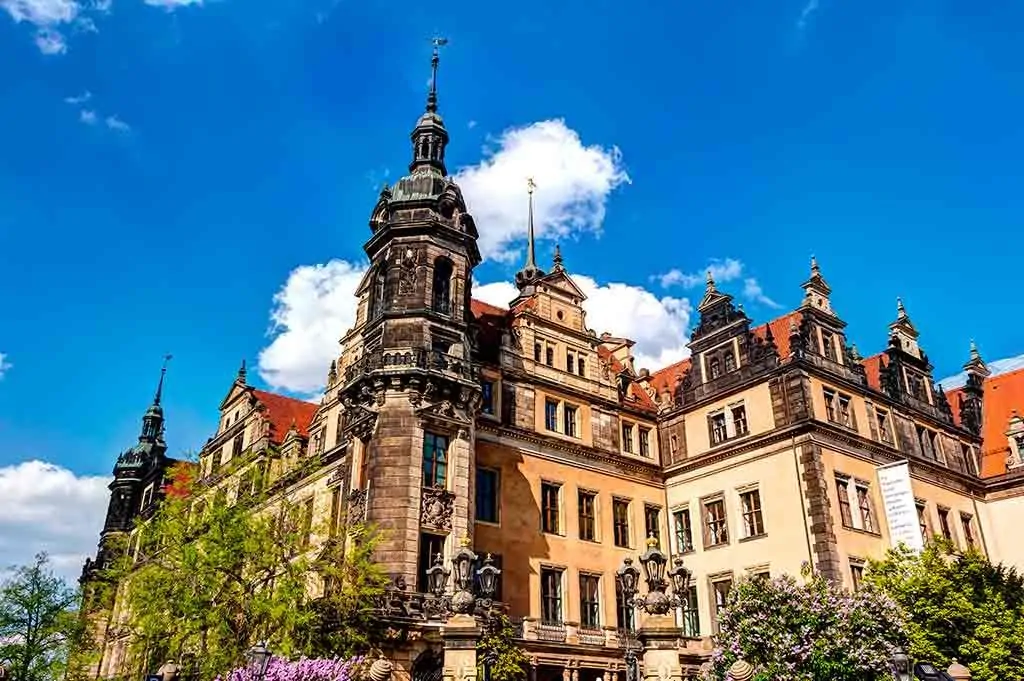
Originally built around the year 1200 in the center of the city, Dresden was a castle constructed according to Romanesque design – an architectural style characterised by thick walls and semi-circular arches, popular across Europe during the 10th, 11th, and 12th centuries.
The Hausmannsturm tower was added at the start of the 15th century, and during the 1460s and 1470s, the keep was rebuilt into a four-wing structure. The castle was badly damaged by a severe fire in 1701, and afterward underwent a large restoration directed by the Elector of Saxony, Augustus II the Strong.
The castle was modeled in baroque style and the collection rooms were created, including the Silver Room, the Heraldic Room, the Jewel Room, the Ivory Room, and the Bronze Room – these rooms contained collections of valuable art and various other treasures.
In 1914 the castle was once again renovated in neo-renaissance style, and various upgrades designed at modernizing the structure were added, such as underfloor heating and electric lighting.
During the 1945 bombing of Dresden, the roof of the castle was destroyed and much of the interior burned, leaving an empty shell. The treasure collections had been moved at the start of the war to Königstein Fortress and therefore survived the destruction.
After lying in ruins for many years after the war, restoration work finally started on Dresden Castle during the 1960s and continues to this day.
Albrechtsberg Castle

This late gothic castle, built from 1471-1495 on a rocky plateau, towers over the Elbe River in the town of Meissen. The castle is enormous and makes for a highly impressive sight with its tall towers topped with pointed roofs – it was certainly intended to make a political statement about the importance of its owners.
There has been a fortification on the site of Albrechtsburg since 929 when King Henry I of Germany defeated the Glomacze tribe and built a castle in modern-day Meissen to control the surrounding countryside.
It was Ernst, Elector of Saxony (1464-86), and Albrecht III, Duke of Saxony (1464-1500) who ordered the construction of the castle that we see today. These two brothers ruled jointly until they agreed to split their possessions in 1485, at which point Albrechtsburg became the possession of Albrecht.
The castle was badly damaged during the Thirty Years’ war and stood empty for a period, before being converted into a porcelain factory by Augustus II the Strong, Elector of Saxony. In the 1860s the factory was removed, and the castle was restored to its full late Gothic glory, before being opened to the public.
Lingner Castle
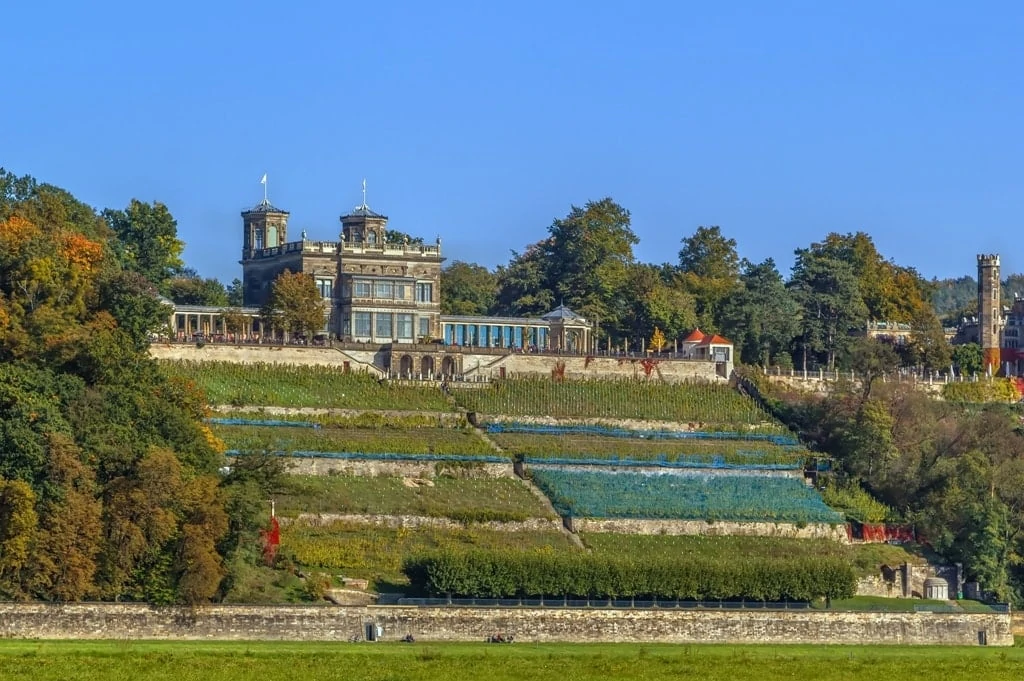
Also known as Lingner Palace or Villa Stockhausen, Lingner was built by Prince Albrecht of Prussia for his chamberlain, Johann von Stockhausen. Designed in a classical style by Adolf Lohse, who also renovated Albrechtsburg Castle, Lingner was constructed between 1850 and 1853.
Von Stockhausen did not get to live in his new home for very long, as he died in the year of its completion – however, his family made the castle their home until 1891 when it was sold to an industrialist Bruno Naumann, and then to Karl August Lingner in 1901.
Lingner was an entrepreneur best known for inventing an anti-bacterial mouthwash known as ‘Odol’, a product which made him a fortune and enabled him to purchase the castle near Dresden.
Lingner lent the castle his name and dwelt in it for the rest of his life, even building a small funicular in the grounds that could carry passengers down to the Elbe River.
When he died in 1916, he was buried in a mausoleum built on the grounds of his home. In his will, Lingner left the castle for the city of Dresden on the condition that the park remain open to the people of the city, and that part of the structure should be a café or restaurant.
Eckberg Castle
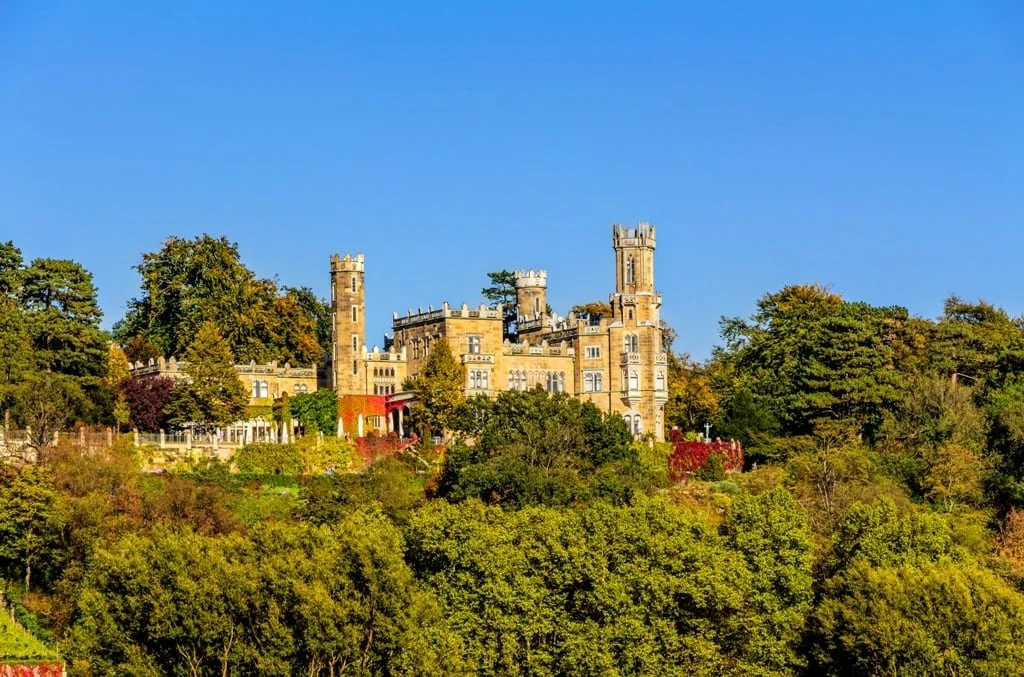
Situated in the small town of Loschwitz near Dresden, Eckberg castle was built by merchant Johann Daniel Souchay from 1859 to 1861. Souchay, who was from Manchester, purchased the land (which was a vineyard) with the intention of creating a luxurious home for himself.
The result is Eckberg castle: an English country palace constructed in neo-gothic style (characterized by tall narrow windows, pointed arches, and decorative patterns), complete with gardens and a large park.
In 1883 the Souchay family sold the castle, and until 1925 it was rented out to various inhabitants. Its new owner Ottomar von Mayenburg redesigned the gardens, creating an elaborate and beautiful landscape.
After World War Two the building was used as a student residence and a research center for VEB Robotron (an electronics manufacturer), before later becoming a hotel and restaurant – it remains open to guests to this day.
Wachwitz Castle
Built by Frederick Augustus II of Saxony in 1824, Wachwitz castle stood above the old royal vineyard of Wachwitz in Dresden. The castle was constructed as a summer palace for Frederick and stood for decades before being demolished and rebuilt in 1892, this time as a summer residence by Crown Prince Frederick Augustus III.
The castle that stands at Wachwtiz today was actually built from 1936-7 and served as the home of Frederich Christian of Saxony until 1945. Situated in a 27-acre park, the castle was used as a base by the Soviet Military Administration following World War Two, before being used as a hotel and later a conference center.
Pillnitz Castle
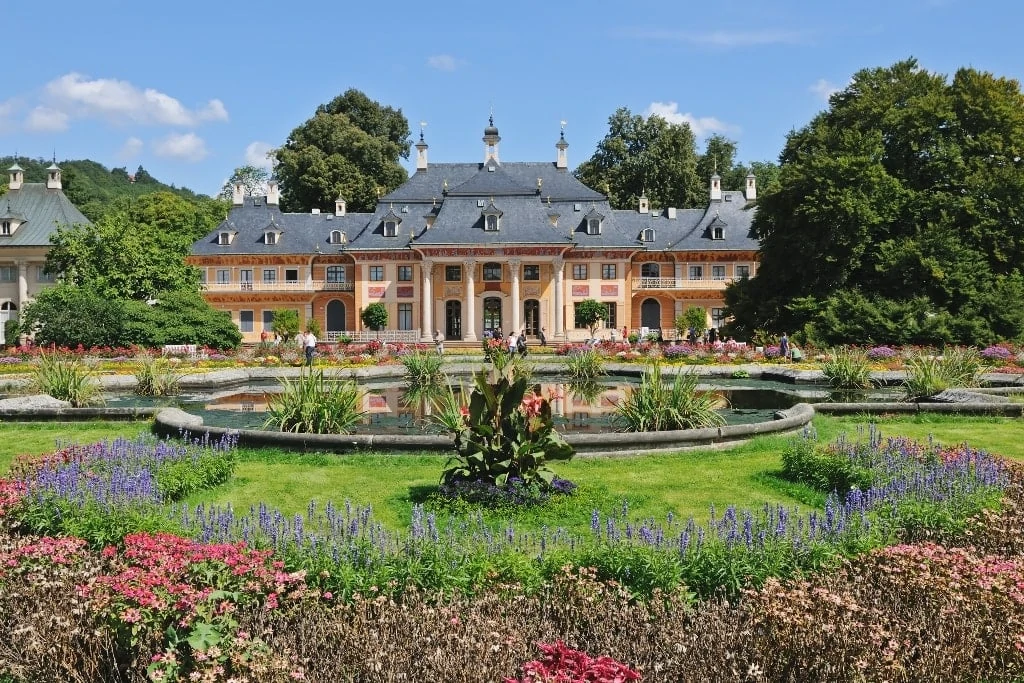
Pillnitz is a Baroque palace in eastern Dresden, on the banks of the River Elbe in the small village of Pillnitz. There has been a residential palace on the site of Pillnitz since the 14th century, although the structures that stand there today date from the 18th century.
In 1694 the Wettin dynasty under Elector John George IV of Saxony purchased the site, before later constructing three distinct palace buildings. The Riverside Palace (Wasserpalais) was built between 1720 and 1721 with staircases leading down to the river, while the Upper Palace or Bergpalais was built from 1722-3.
Later the New Palace (Neues Palais) was added in to link the two existing structures – Neoclassical in style, the New Palace has oriental-influenced roofs and moldings that were fashionable during the period of its construction from 1819-1826.
Pillnitz also features extensive gardens and a 29-hectare park and was used by the Wettin dynasty as a summer residence until 1918. Today the castle contains museums and is open to the public.
Fortress Königstein

Also known as the ‘Saxon Bastille’, Königstein Fortress is an enormous hilltop fortification, one of the largest in Europe. Constructed on a 9.5-hectare plateau that stands 240 meters above the River Elbe, Königstein dominates the local landscape.
The ramparts of the fortress run for some 1,800 meters, while the thick walls are 42 meters high in places, with sheer faces making an assault incredibly difficult. A castle has stood at Königstein since at least the time of King Wenceslas of Bohemia in 1233 and was strategically important for controlling trade passing along the Elbe.
The oldest part of the fortification still standing is the 13th-century chapel, although the 152-meter-deep well is also very old, dating from the mid-16th century.
Over many decades, the electors of Saxony made defensive additions to Königstein – the most extensive changes were made from 1589-97 when Christian I constructed high walls, a gatehouse, an armory, and a barracks.
From 1870-1895 battery ramparts were added. Thanks to its fearsome reputation, Königstein was never captured or besieged: the fortress was primarily used as a residence by the Saxon electors, as a safe place to store treasures, and as a prison.
Albrechtsburg Meissen

Built by the younger brother of King Frederick William IV of Prussia, Prince Albert, in 1854, Albrechtsburg is a Neoclassical palace situated next to the Elbe River.
Originally a manor house belonging to Scottish Lord James Ogilvy, 7th Earl of Findlater, had stood on the site of Albrechtsburg since 1803. Prince Albert made Albrechtsburg his home after his marriage in 1853 to Rosalie von Rauch, Countess of Hohenau (considered to be beneath his rank), forcing him to leave the Prussian Court.
Architect Adolf Lohse was commissioned to design the palace, which was built in the typical mid-19th century Neoclassical style using marble and white sandstone from Saxony.
Albert and Rosalie’s son Wilhelm took over the palace upon their deaths – when he was forced to sell Albrechtsburg in 1925 to cover gambling debts, the city of Dresden purchased the site, opening the gardens to the public.
During World War Two the palace was used by the SA until 1943 when the building became a children’s home. Today it is a private hotel and catering school and can be hired for events.
Moritzburg Castle
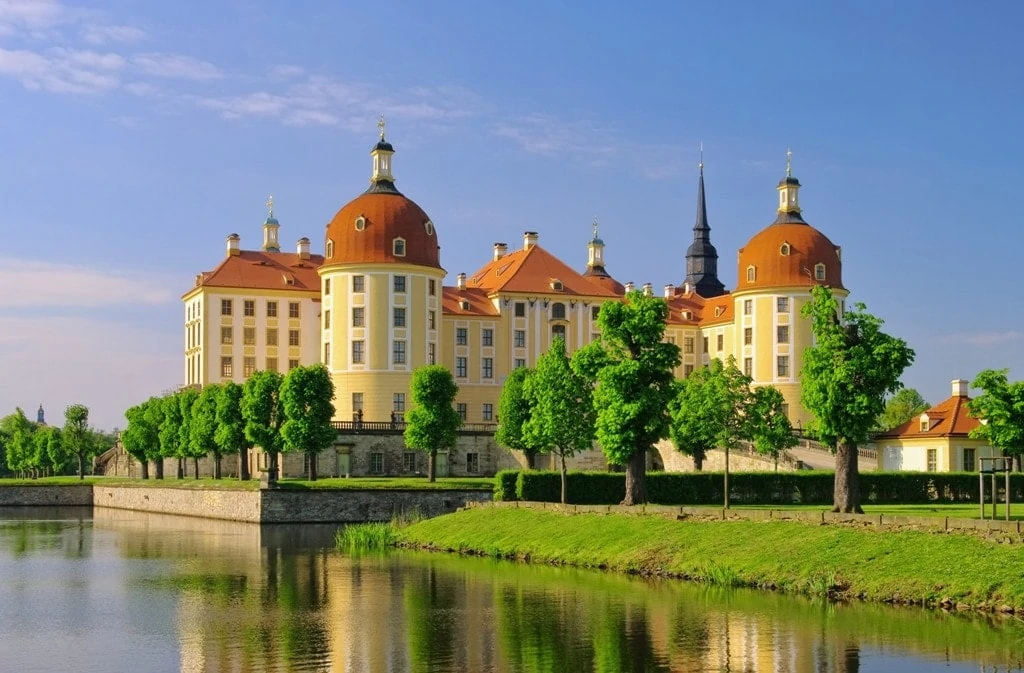
Situated eight miles northwest of Dresden, Moritzburg castle is a Baroque palace that stands on the original site of a 16th-century hunting lodge belonging to Duke Moritz of Saxony.
Between 1661 and 1671 an early baroque chapel was added to the hunting lodge, before Elector Augustus II the Strong remodeled the castle altogether. From 1723-1733 architects Matthäus Daniel Pöppelmann and Zacharias Longuelune constructed a large Baroque palace, complete with four enormous round towers.
The entire structure was placed onto a symmetrical artificial island, giving Mortizburg a very striking appearance as the castle appears to sit on the surface of the lake. A park was also added as well as ponds and a game preserve, making Moritzburg a very luxurious palatial home.
The interior of the castle is similarly elaborate and in keeping with the castle’s previous incarnation as a hunting lodge: many of the rooms are covered in gold-gilded leather and some are decorated with deer antlers, one of which is the largest in the world measuring two meters in width and weighing twenty kilograms. The house of Wettin owned the castle until 1945 when it was repossessed by the Soviet administration.
Wackerbarth Castle
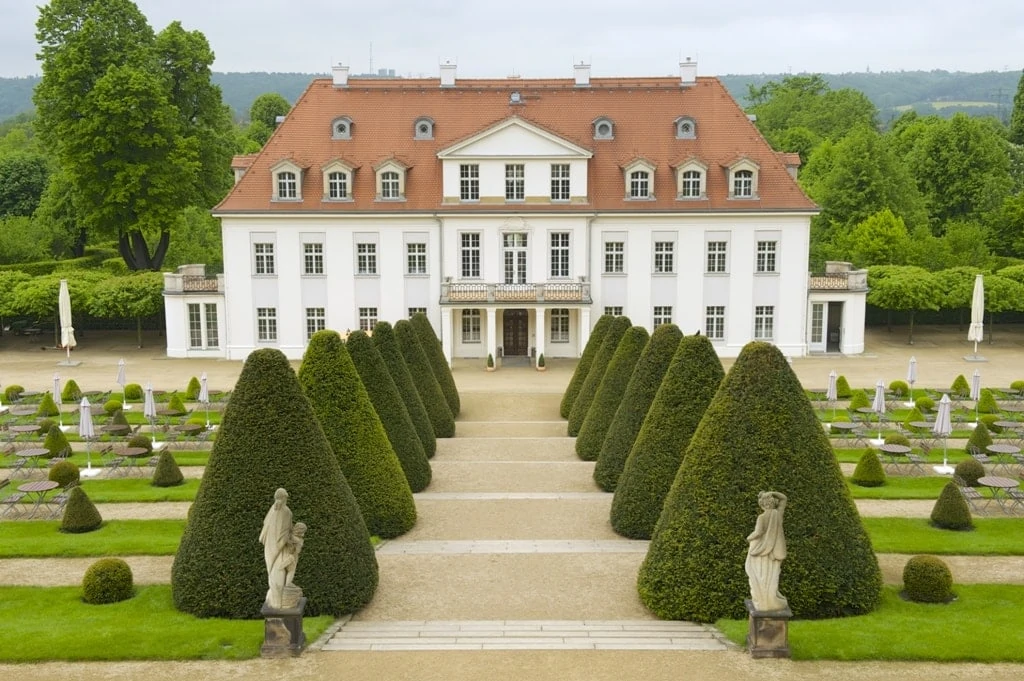
Wackerbarth Castle was a Baroque palace named after the Saxon duke August Christoph Graf von Wackerbarth (1662-1734). Situated in the city of Dresden, north of the Elbe, the castle was used as a residence by the Saxon dukes.
Close to the Radebeul vineyards, Wackerbarth featured beautiful gardens and is associated with wine production to this day. Built between 1723 and 1729, the castle itself was destroyed during World War Two by the Allied bombing raids of February 1945.
In 1963 the ruins of the castle were demolished, and no reconstruction attempts have been made, although other similar palaces in Dresden have been rebuilt.
